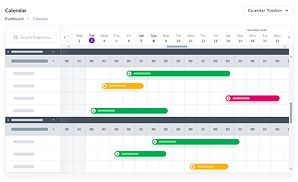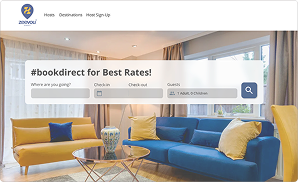If you’re looking to expand your vacation rental business, rental arbitrage properties could be a smart investment. However, there are many aspects that you need to bear in mind.
In this blog post, we outline seven key factors to consider when selecting rental arbitrage properties.

Table of Contents
1. Customer Segmentation
First, identify who will be staying in your rental arbitrage property. Consider if you’ll be catering to:
- Corporate executives
- Contractors
- Family visitors
- Tourists
- Travelling nurses
- Academics
Each group has specific needs to address when adding a property to your vacation rental portfolio.
2. Amenities
For each segment of your customers, you have to provide certain amenities. However, there are a few facilities which are guaranteed to always be welcome.
Parking
Having a private parking space is always counted as an added value, especially for local tourists and business travellers.
Internet Access
Nowadays, the importance of having internet access is equivalent to having a bed or a bathroom in your holiday rental. It is quite essential to be able to provide Wi-Fi internet access and to ensure that the signal is strong enough.
Room Size
Size of the room is one of the factors to look out for when choosing rental arbitrage properties. With regards to your target segment, make sure the property has enough space. For example, a family needs a double bed, and ideally additional space for a foldable bed.
Common Spaces
Make sure there are enough showers and bathrooms for the maximum potential occupancy of the property. Ensure the kitchen and common areas have enough seating and workspace for at least half the guests to use at once.

3. Location
Depending on the customer segmentation, you need to think about different factors when trying to select a good spot. You need to try and predict the buying pattern of the guests who are going to stay at your vacation rental properties.
Proximity to Public Transport
One of the most important factors for tourists is the Bus Stop and Metro Station accessibility. In addition, being in the main zone of public transportation is also vital for them when time is at a premium.
Proximity to Tourist Attractions and Central Business Districts
The further away from tourist attractions the property is located, the less popular your vacation rental would be. Tourists are in the city to spend time visiting attractions, not to look at underground tunnels and other bus passengers.
If you are trying to target business travellers, try to see what areas of town are likely to attract them.
The Average Age in the Neighbourhood
Considering the average age in the area is quite important as you may otherwise find yourself located next to a retirement home. In this case, you risk facing heightened complaints from neighbours about the noise caused by frequent check-ins and check-outs. Therefore, it is better to avoid districts which are exclusive to one specific age group.
Seasonality
According to the location of the building, the flux of your customers may vary throughout the year. This seasonality may lead to fluctuations in the income that you are generating from the rentals.
A building close to the sea has the highest occupancy rate in the summer. But, the one close to the mountains is appropriate for skiing resorts, and would be most popular over the winter months. Location bears a direct impact on the seasonality of your business.
4. Operations
You should consider your ability to meet guests’ standards when choosing rental arbitrage properties. Will you be able to:
A. Find a local cleaning company in the vicinity of the property?
B. Manage the check-ins and check-outs remotely, either through the meet & greet or via a self-check-in mechanism?
C. Check the property for damage shortly after each check-out?
D. Find maintenance personnel who are able to respond promptly when required?

5. Financial Considerations
When choosing a rental arbitrage property, the financial aspects are crucial to ensuring profitability.
Rent vs Potential Revenue
To evaluate rental arbitrage properties, ensure the rental income can comfortably cover rent, utilities, and other expenses. Start by researching the average nightly rate for similar short-term rentals in the area and estimating your expected occupancy rate. The goal is to ensure that your projected monthly income from guests exceeds the fixed costs associated with renting the property.
Initial Investment
Beyond the monthly rent, you’ll need to consider the initial investment required to make the property guest-ready. This includes furnishing the space, purchasing linens, and adding decor that appeals to potential guests. Additionally, you may need to budget for repairs or upgrades to bring the property up to a competitive standard.
Marketing expenses, such as professional photography or premium listings on short-term rental platforms, are also important. This initial investment can range significantly depending on the property’s size, location, and current condition. A thorough assessment of these costs is essential to determine how long it will take to recoup your initial investment.
Cash Flow Projections
Creating detailed cash flow projections is crucial for understanding the property’s long-term viability. Start by calculating your monthly gross revenue based on estimated occupancy rates and nightly rates. Then, subtract your fixed costs, such as rent, utilities, and insurance, as well as variable costs like cleaning fees, restocking supplies, and marketing.
It’s also important to account for seasonal fluctuations in demand, as certain times of the year may be less profitable. For example, if the property is located in a beach town, demand may peak during the summer and drop off in the winter. By incorporating these fluctuations into your projections, you can better plan for months when revenue may be lower. So, you will set aside funds during peak seasons to cover leaner times.
6. Legal and Compliance Issues
Navigating the legal landscape is essential when running rental arbitrage properties. Understanding zoning laws, insurance needs, and contractual obligations will help protect your investment and ensure a smooth operation.
Zoning and Permitting
Before committing to a rental arbitrage property, it’s vital to research local zoning laws and regulations that govern short-term rentals. Many cities have specific rules regarding where and how properties can be rented out on a short-term basis.
For instance, some cities may only allow short-term rentals in specific zones or require the property owner to live on-site. Failing to comply with these regulations can result in hefty fines or even legal action. So, it’s crucial to verify that the property is in a compliant area and obtain any necessary permits before listing it on online platforms.
Insurance Requirements
Insurance is another critical aspect of legal compliance in rental arbitrage. Traditional homeowner’s or renter’s insurance policies typically do not cover short-term rental activities, leaving you vulnerable to financial risks. Instead, you’ll need specialised insurance that covers short-term rentals.
These policies protect against various risks, including guest injuries, property damage, and loss of rental income due to unforeseen events. Additionally, some rental platforms offer their own insurance programmes. But, it’s important to read the fine print and determine if additional coverage is needed.
Contractual Obligations
One of the most crucial factors in rental arbitrage is ensuring that your lease agreement allows for subletting or short-term rentals. Many standard leases prohibit subletting without the landlord’s consent, and some specifically ban short-term rentals. Violating these terms can lead to eviction, legal disputes, or financial penalties.
To avoid complications, have an open conversation with the property owner about your intentions. If they agree, make sure to get written permission or an addendum to the lease that explicitly allows for short-term rentals. This not only protects you legally but also fosters a positive relationship with the landlord.

7. Scalability and Long-Term Viability
In the rental arbitrage business, ensuring scalability and viability in a long run is crucial for sustainable success. This involves preparing for market fluctuations and choosing properties that have the potential for long-term growth.
Adaptability to Market Changes
The rental market is dynamic, with demand influenced by various factors such as economic conditions, local events, and changes in regulations. Therefore, it’s essential to choose properties that can adapt to these market shifts and remain profitable.
One way to ensure adaptability is by selecting properties in diverse locations that attract different types of guests. A property near a convention centre, for example, might see steady demand from business travellers during the week. On the other hand, one close to a popular tourist attraction could see higher occupancy on weekends and holidays.
Additionally, consider properties that can be easily adjusted to cater to different market segments. For instance, a larger property could be converted into multiple smaller units or marketed to families during peak seasons and solo travellers during slower periods.
Long-Term Growth Potential
Choosing rental arbitrage properties with sustained growth capability is key to building a sustainable property portfolio. This involves analysing whether the location and property are likely to appreciate in value over time. This can enhance both rental income and property value.
When assessing a property’s growth potential, consider factors such as planned infrastructure projects, economic development, and population growth in the area. For example, a neighbourhood with a new transit line, shopping centre, or business park could see increased demand for rentals. Similarly, locations near emerging tourist destinations or revitalisation projects might experience significant appreciation.
Additionally, consider the property’s condition and the possibility of making improvements that can increase its value and rental appeal. Simple upgrades like modernising the kitchen, adding energy-efficient features, or enhancing the property’s curb appeal can lead to higher rental rates and attract more guests.




